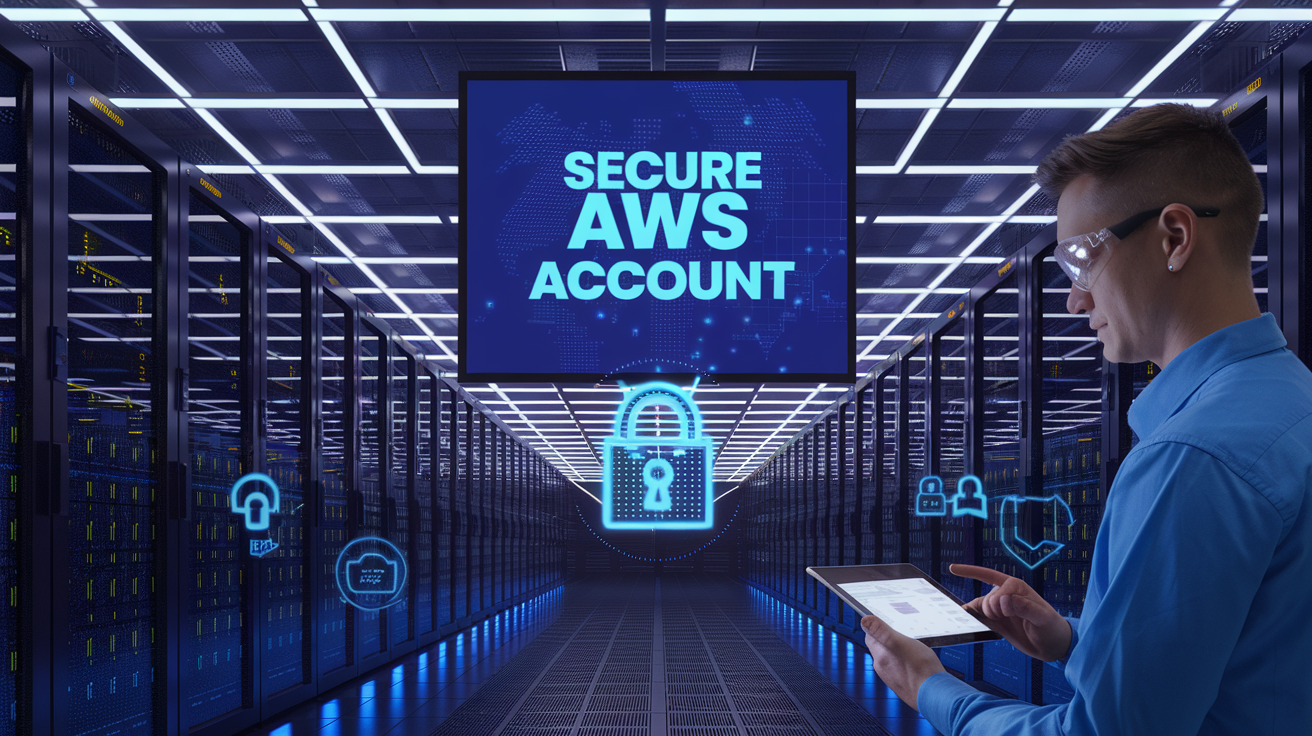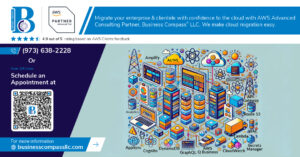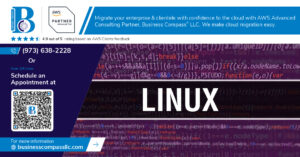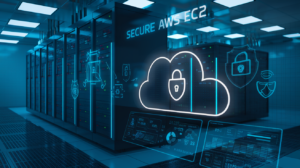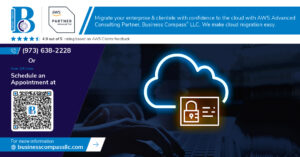🚨 Is your AWS account a ticking time bomb? In today’s digital landscape, cloud security isn’t just important—it’s critical. With cyber threats evolving at breakneck speed, your AWS account could be the next target. But don’t panic just yet!
Imagine having the peace of mind that comes with a fortress-like AWS environment. Picture your data, applications, and infrastructure shielded from prying eyes and malicious actors. This isn’t just a dream—it’s achievable reality. And the best part? You’re about to discover how.
In this comprehensive guide, we’ll walk you through the essential steps to secure your AWS account. From mastering the basics to implementing advanced strategies, we’ve got you covered. Get ready to explore authentication measures, IAM best practices, network security, and much more. Let’s transform your AWS account from a potential vulnerability into an impenetrable stronghold! 💪🛡️
Understanding AWS Account Security Basics

A. Importance of a secure AWS account
Securing your AWS account is paramount in today’s digital landscape. A compromised account can lead to:
- Unauthorized access to sensitive data
- Financial losses due to resource misuse
- Reputation damage
- Compliance violations
Consider the following statistics:
| Security Breach Consequences | Percentage of Companies Affected |
|---|---|
| Data loss | 64% |
| Financial impact | 59% |
| Reputation damage | 54% |
| Legal repercussions | 38% |
B. Key security features in AWS
AWS offers robust security features to protect your account:
- Identity and Access Management (IAM)
- Multi-Factor Authentication (MFA)
- Virtual Private Cloud (VPC)
- AWS Shield for DDoS protection
- AWS CloudTrail for auditing
C. Common security threats to AWS accounts
Be aware of these prevalent threats:
- Misconfigured security groups
- Weak password policies
- Unencrypted data storage
- Insider threats
- Phishing attacks targeting AWS credentials
Implementing best practices and leveraging AWS’s security features can significantly reduce these risks. As we move forward, we’ll explore how to implement strong authentication measures to further fortify your AWS account.
Implementing Strong Authentication Measures

A. Setting up Multi-Factor Authentication (MFA)
Multi-Factor Authentication (MFA) adds an essential layer of security to your AWS account. By requiring two or more authentication factors, MFA significantly reduces the risk of unauthorized access.
Types of MFA supported by AWS:
- Virtual MFA devices (smartphone apps)
- Hardware MFA devices (physical tokens)
- U2F security keys
To set up MFA:
- Sign in to the AWS Management Console
- Navigate to IAM dashboard
- Select the user or root account
- Choose “Manage MFA device”
- Follow the wizard to add your preferred MFA device
| MFA Type | Pros | Cons |
|---|---|---|
| Virtual | Free, convenient | Requires smartphone |
| Hardware | No smartphone needed | Additional cost |
| U2F | Highly secure | Limited device support |
B. Creating and managing IAM users
IAM users are individual identities within your AWS account. Creating separate IAM users for different team members or applications is crucial for maintaining security and accountability.
Best practices for IAM user management:
- Create individual IAM users instead of sharing credentials
- Grant least privilege access
- Use groups to assign permissions
- Regularly review and rotate access keys
C. Configuring password policies
A strong password policy is essential for protecting IAM users. AWS allows you to set custom password requirements to ensure robust security.
Key password policy settings:
- Minimum password length
- Require uppercase letters
- Require lowercase letters
- Require numbers
- Require non-alphanumeric characters
- Enable password expiration
- Prevent password reuse
D. Using AWS Single Sign-On (SSO)
AWS SSO simplifies access management across multiple AWS accounts and business applications. It provides a central place to manage SSO access and user permissions.
Benefits of AWS SSO:
- Centralized access control
- Integration with corporate directories
- Simplified user experience
- Enhanced security through reduced password fatigue
Now that we’ve covered strong authentication measures, let’s explore how to manage access with IAM for even greater control over your AWS resources.
Managing Access with IAM

Creating and assigning IAM roles
IAM roles are essential for managing access to AWS resources securely. They allow you to delegate permissions to users, applications, or services without sharing long-term credentials. Here’s a quick guide to creating and assigning IAM roles:
- Navigate to the IAM console
- Click on “Roles” in the left sidebar
- Select “Create role”
- Choose the trusted entity type (AWS service, another AWS account, or web identity)
- Attach permissions policies
- Review and create the role
| Role Type | Use Case | Example |
|---|---|---|
| Service Role | For AWS services to access resources | EC2 instance accessing S3 bucket |
| Cross-Account Role | For users in another AWS account | Allowing external auditors access |
| Identity Provider Role | For federated users | Enabling single sign-on with Active Directory |
Implementing least privilege principle
The least privilege principle is crucial for maintaining a secure AWS environment. It involves granting only the minimum permissions necessary for a user or role to perform its intended tasks. To implement this:
- Start with no permissions and add them as needed
- Use AWS managed policies for common job functions
- Create custom policies for specific requirements
- Regularly review and remove unnecessary permissions
Using IAM groups for efficient management
IAM groups simplify permission management by allowing you to assign policies to multiple users at once. This approach offers several benefits:
- Easier policy updates: Change a group’s permissions to affect all members
- Simplified user management: Add or remove users from groups as needed
- Consistent permissions: Ensure users with similar roles have identical access
To create and manage IAM groups:
- Go to the IAM console
- Click on “User groups” in the left sidebar
- Select “Create group”
- Name the group and attach policies
- Add users to the group
Regularly reviewing and updating permissions
Maintaining a secure AWS environment requires ongoing attention to access management. Regular reviews help identify and mitigate potential security risks. Implement these best practices:
- Conduct quarterly access reviews
- Use AWS IAM Access Analyzer to identify unintended access
- Monitor CloudTrail logs for unusual activity
- Remove permissions for terminated employees or obsolete services
- Update policies to reflect changes in business requirements or AWS services
By following these IAM best practices, you can significantly enhance the security of your AWS account and maintain granular control over resource access.
Securing Network Access

Configuring Virtual Private Cloud (VPC)
A Virtual Private Cloud (VPC) is your private section of the AWS cloud, providing a secure and isolated environment for your resources. When configuring your VPC:
- Define IP address ranges
- Create subnets
- Set up route tables
- Configure internet gateways
| VPC Component | Purpose |
|---|---|
| Subnets | Segment your network |
| Route Tables | Direct network traffic |
| Internet Gateway | Allow internet access |
| NAT Gateway | Enable outbound internet access for private subnets |
Implementing security groups and network ACLs
Security groups and network ACLs work together to create a robust defense for your AWS resources:
- Security groups: Stateful firewalls operating at the instance level
- Network ACLs: Stateless firewalls operating at the subnet level
| Feature | Security Groups | Network ACLs |
|---|---|---|
| Scope | Instance | Subnet |
| Rule Type | Allow rules only | Allow and deny rules |
| State | Stateful | Stateless |
Using AWS Web Application Firewall (WAF)
AWS WAF protects your web applications from common web exploits. Key features include:
- IP address blocking
- Geo-matching to restrict traffic from specific countries
- Size constraint rules to prevent overflow attacks
- SQL injection and cross-site scripting (XSS) protection
Enabling VPN and Direct Connect for secure connections
For secure connectivity between your on-premises network and AWS:
- AWS Site-to-Site VPN: Encrypted connection over the internet
- AWS Direct Connect: Dedicated private connection to AWS
| Connection Type | Pros | Cons |
|---|---|---|
| Site-to-Site VPN | Easy setup, lower cost | Depends on internet quality |
| Direct Connect | Higher bandwidth, consistent performance | Higher cost, longer setup time |
By implementing these network security measures, you create a robust defense for your AWS infrastructure, protecting against unauthorized access and potential threats.
Monitoring and Auditing Your AWS Account

Setting up AWS CloudTrail
AWS CloudTrail is a crucial service for monitoring and auditing your AWS account. It provides a comprehensive log of all API calls made within your AWS environment, enabling you to track user activity, detect unauthorized access, and maintain compliance.
To set up CloudTrail:
- Navigate to the CloudTrail console
- Click “Create trail”
- Configure trail settings (name, S3 bucket, etc.)
- Choose events to log (management, data, insights)
- Enable trail across all regions
| CloudTrail Feature | Description |
|---|---|
| Multi-region logging | Tracks activity across all AWS regions |
| S3 bucket storage | Securely stores logs for long-term analysis |
| Log file integrity | Ensures logs haven’t been tampered with |
| Integration with CloudWatch | Enables real-time monitoring and alerts |
Utilizing AWS Config for compliance
AWS Config helps you assess, audit, and evaluate the configurations of your AWS resources. It provides a detailed inventory of your resources and tracks changes over time, ensuring compliance with internal policies and regulatory standards.
Key benefits of AWS Config:
- Continuous monitoring and assessment
- Automated compliance checks
- Historical configuration data
- Integration with other AWS services
Implementing Amazon GuardDuty for threat detection
Amazon GuardDuty is an intelligent threat detection service that continuously monitors your AWS accounts and workloads for malicious activity and unauthorized behavior. It uses machine learning, anomaly detection, and integrated threat intelligence to identify potential security issues.
GuardDuty analyzes various data sources, including:
- VPC Flow Logs
- AWS CloudTrail events
- DNS logs
Creating custom CloudWatch alarms
CloudWatch alarms allow you to set up automated notifications and actions based on specific metrics or log patterns. By creating custom alarms, you can proactively monitor your AWS environment and respond quickly to potential security incidents.
Now that we’ve covered monitoring and auditing tools, let’s explore how to centralize security management using AWS Security Hub.
Encrypting Data in AWS

Implementing encryption at rest
Encrypting data at rest is crucial for protecting sensitive information stored in AWS services. Here’s how to implement it effectively:
- Use Amazon S3 server-side encryption
- Enable EBS volume encryption
- Implement RDS encryption
| AWS Service | Encryption Method |
|---|---|
| S3 | SSE-S3, SSE-KMS, SSE-C |
| EBS | AES-256 |
| RDS | AWS KMS |
Securing data in transit
To protect data as it moves between AWS services or to external clients:
- Use SSL/TLS for all network communications
- Implement VPN for secure connections to your VPC
- Enable API Gateway SSL certificates
Managing encryption keys with AWS Key Management Service (KMS)
AWS KMS provides centralized control over cryptographic keys:
- Create and manage customer master keys (CMKs)
- Use key rotation for enhanced security
- Implement fine-grained access controls on keys
Using AWS Certificate Manager for SSL/TLS certificates
ACM simplifies the process of obtaining and managing SSL/TLS certificates:
- Request public certificates for your domains
- Automatically renew certificates
- Integrate with AWS services like CloudFront and ELB
By implementing these encryption strategies, you’ll significantly enhance the security of your AWS account and protect sensitive data from unauthorized access. Next, we’ll explore disaster recovery and backup strategies to ensure business continuity in case of unexpected events.
Disaster Recovery and Backup Strategies

Creating and testing disaster recovery plans
Disaster recovery (DR) plans are crucial for maintaining business continuity in the event of unforeseen incidents. To create an effective DR plan for your AWS environment:
- Identify critical assets and processes
- Define recovery time objectives (RTO) and recovery point objectives (RPO)
- Design recovery strategies
- Document procedures
- Test and refine the plan regularly
| Component | Description |
|---|---|
| RTO | Maximum acceptable downtime |
| RPO | Maximum acceptable data loss |
Implementing automated backups
Automated backups ensure consistent protection of your data without manual intervention. Key strategies include:
- Utilizing AWS Backup for EBS volumes, RDS databases, and EFS file systems
- Configuring automated snapshots for EC2 instances
- Setting up S3 bucket versioning and replication
Using AWS Backup for centralized backup management
AWS Backup provides a centralized solution for managing backups across multiple AWS services:
- Create backup plans with customized schedules and retention policies
- Monitor backup jobs and restore activities
- Implement cross-region and cross-account backup strategies
Leveraging multi-region deployments for high availability
Multi-region deployments enhance resilience and ensure business continuity:
- Replicate data across regions using services like S3 Cross-Region Replication
- Implement active-active or active-passive architectures
- Use Route 53 for intelligent traffic routing between regions
- Leverage AWS Global Accelerator for improved application availability
By implementing these strategies, you can significantly enhance your AWS account’s disaster recovery capabilities and ensure robust backup management.

Securing your AWS account is a multi-faceted approach that requires attention to various aspects of your cloud infrastructure. By implementing strong authentication measures, managing access through IAM, securing network access, and maintaining vigilant monitoring and auditing practices, you can significantly enhance your account’s security posture. Encrypting data and establishing robust disaster recovery and backup strategies further fortify your defenses against potential threats and data loss.
As you embark on your journey to secure your AWS account, remember that security is an ongoing process. Regularly review and update your security measures, stay informed about the latest best practices, and leverage AWS’s built-in security features to their fullest potential. By prioritizing security in your AWS environment, you not only protect your valuable data and resources but also build a foundation of trust and reliability for your organization’s cloud operations.










